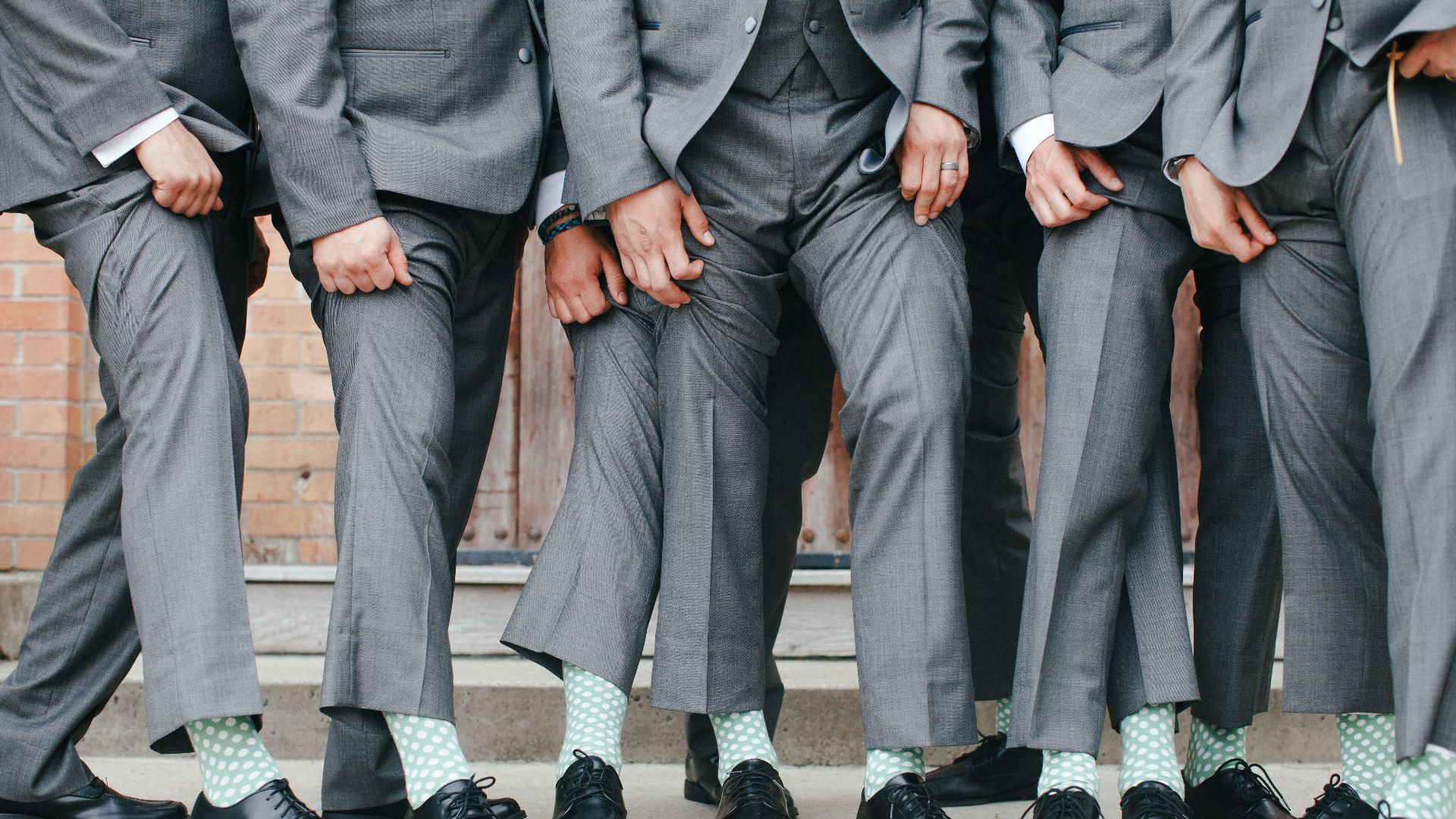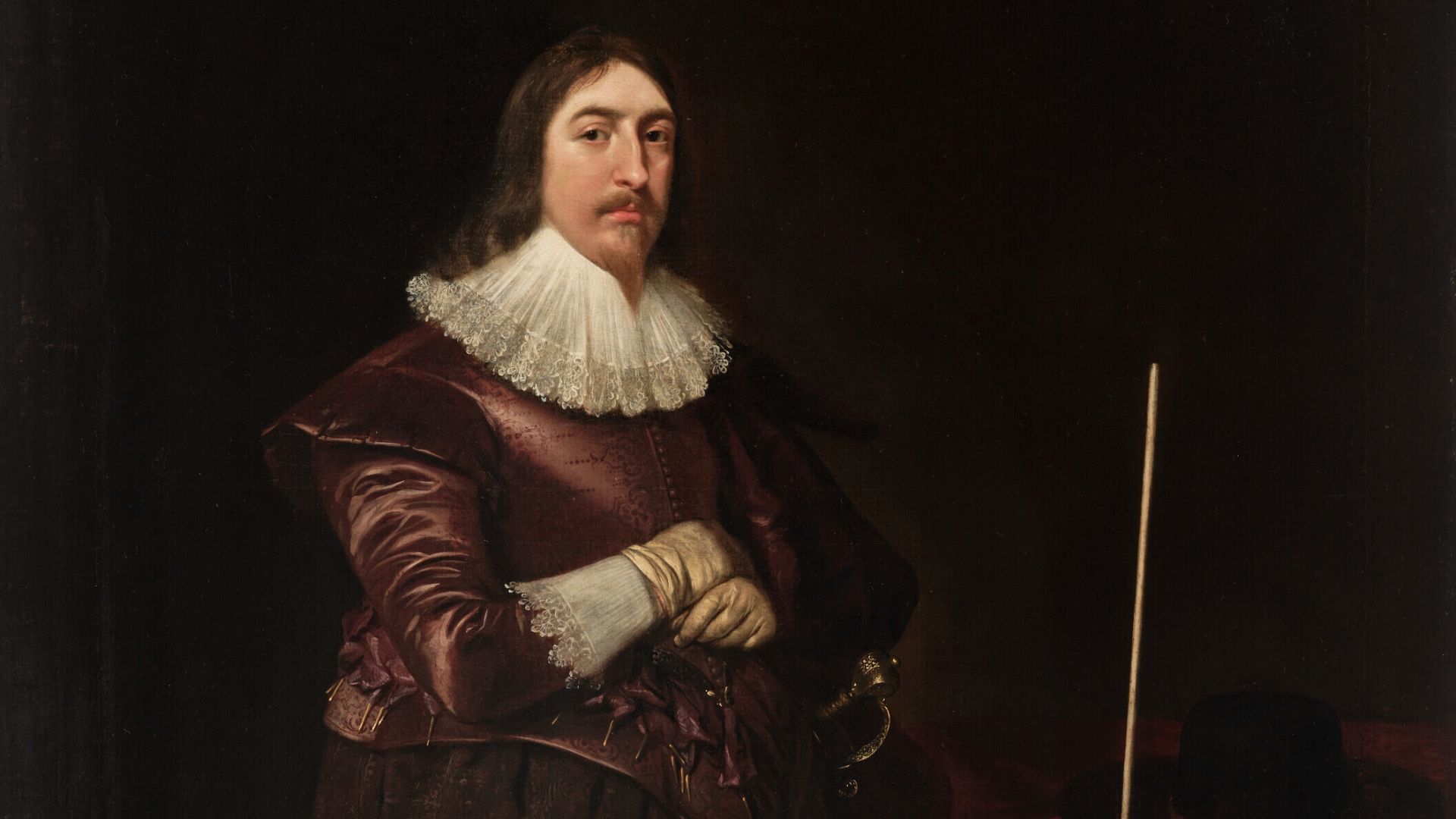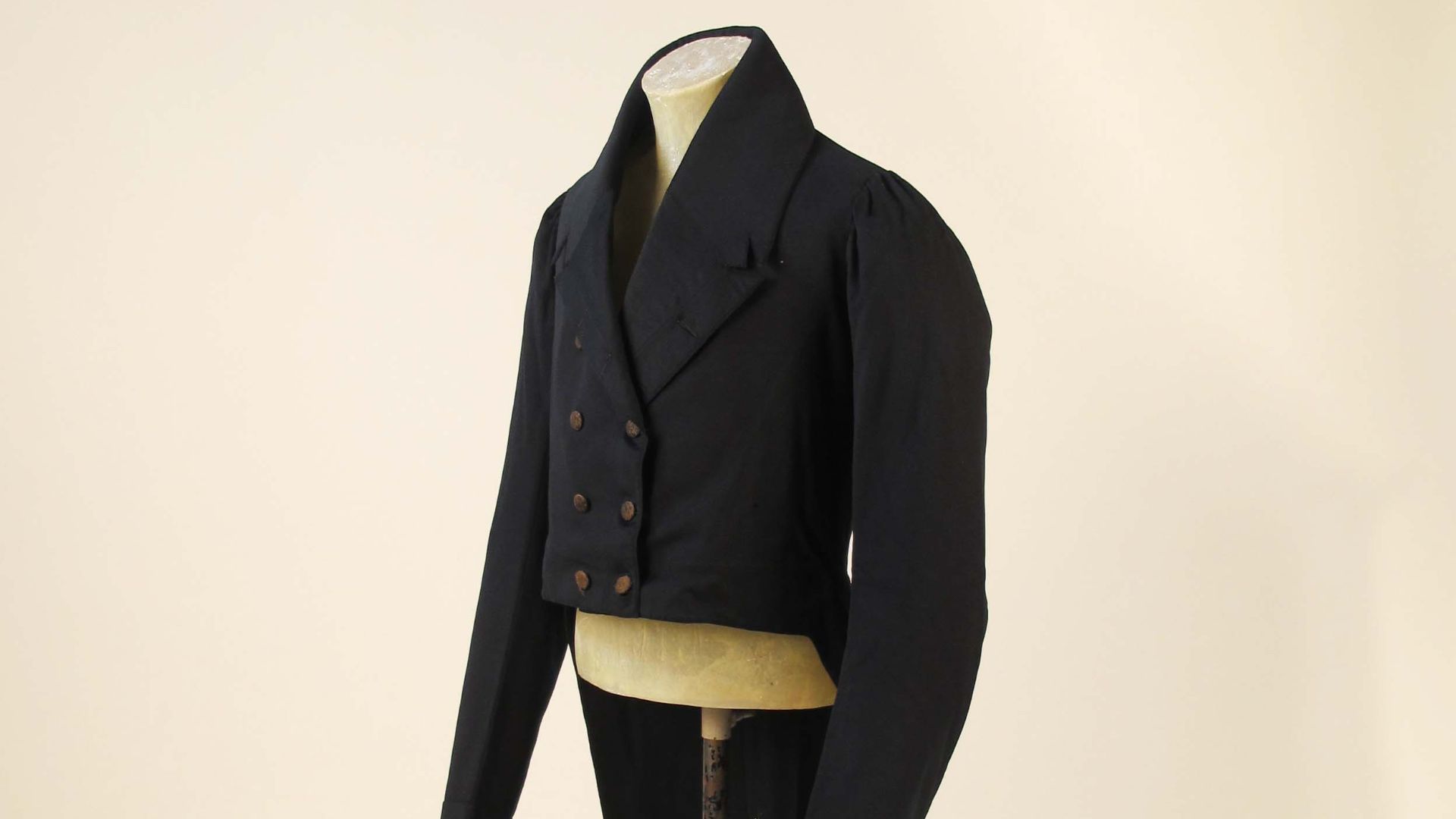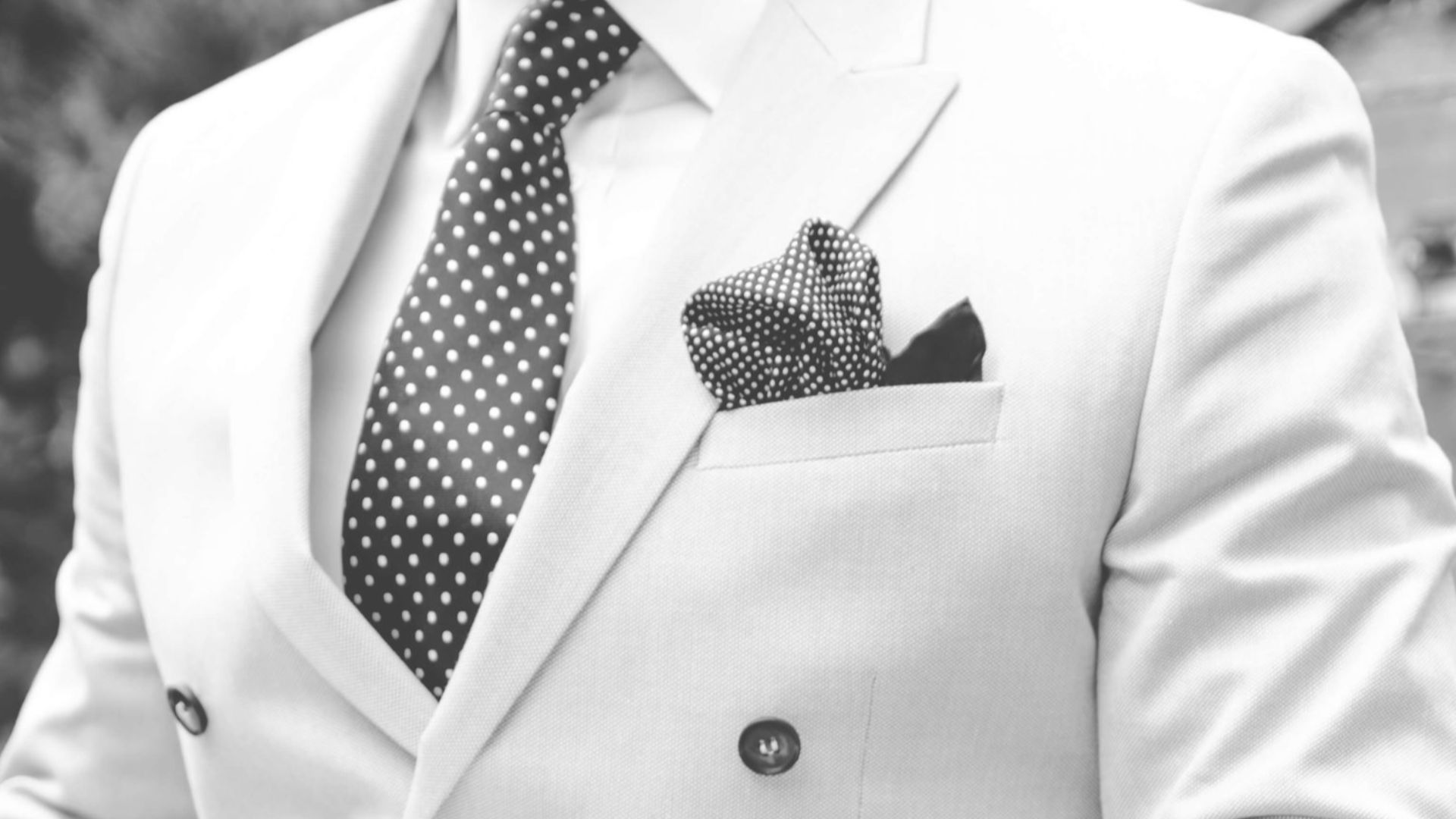Several Hundred Years Of Formal Wear
Just like women, men have also been the victims of changing fashion trends! Albeit, less so than women, with simple tailoring usually doing most of the grunt work, but still. Like all fashion, aspects of suits go in and out of style with the decades, either due to financial hardship, convenience, or because a famous person wore something one time. Regardless of the reason, you may discover some interesting origins of this classic attire.
1. The OG Getup
Before the modern suit came into play, “suits’ were the royal court dress code during the 17th century. This getup included thick fabrics like velvet, knee-high breeches, and, of course, the powdered wig. This style was largely abandoned in part due to the French Revolution.
2. Long Trousers
Thanks to a man by the name of Beau Brummell, we have the beginnings of the suits we know and love today. Brummell refined the popular style for the Regency era, popularizing the modern suit jacket, full-length pants, and a necktie.
 Lucas T Photography on Unsplash
Lucas T Photography on Unsplash
3. Fabrics
During the 19th to mid-20th century, the most prominent suit fabric was wool, thanks to its durability, warmth, and cleanliness. Tweed and pinstripe wool appeared in the 1920s, while rayon and grey flannel showed up during the rationing eras of the 30s and 40s.
4. Four-Button Jackets
The 90s were not a good time for suits, thanks to the rise in baggy or unshapely clothes in casual wear. This era also introduced the four-button jacket, which appeared on the popular single-breasted jackets of the time.
 LOGAN WEAVER | @LGNWVR on Unsplash
LOGAN WEAVER | @LGNWVR on Unsplash
5. Double Breasted Waistcoats
Considered unusual today, it was common to see double-breasted waistcoats underneath single-breasted jackets during the 1920s. It was likely due to the flashiness of the era, but it would probably just look poorly today.
6. Tailcoats
Typically seen on the equestrian morning coat, tailcoats quickly became a staple in formal wear during the 18th century. You know it, you love it, it's the jacket with a waist-length cutaway, with two longer tails in the back. Despite its humbler beginnings, this type of jacket is now the standard for white tie events.
7. Lounge Suits
This style of suit appeared in 19th-century England as an alternative to the frock coat. It was commonly worn by the upper class during country visits and sporting activities, but became the 20th-century standard for business and formal attire. Despite it feeling overly formal, a lounge suit is typically what we wear today.
 Unknown authorUnknown author on Wikimedia
Unknown authorUnknown author on Wikimedia
8. Relaxed Silhouettes
The lounge suit was just one of many “relaxed-fit” eras for suit wearers. The American Sack Suit featured a comfortable but boxy silhouette that provided formal comfort for the American worker. The 1920s to the 40s also expanded on this idea, with suits loosening as the population played with self-expression and individuality.
9. The Frock
This style of coat was well-loved during the Victorian period, so much so that it was the standard daily clothing. It’s noted to be a fitted, long-sleeved coat that ends just above the knee. It was also one of the first times we saw the suppression around the waistcoat, making the waist appear thinner than the chest and shoulder area.
 The Metropolitan Museum of Art on Wikimedia
The Metropolitan Museum of Art on Wikimedia
10. Hats
You’re basically naked if you wear a suit without a hat! Or at least, that’s how pre-20th-century groups viewed it. Hats were an essential part of the outfit as an indication of social and monetary status. Sadly, the hat declined in popularity with the rise of the automobile, sometime during the 50s or 60s.
11. Fun Patterns & Colors
Not all suits need to be fun, but it sure does help to make a statement. The 70s and 80s were all about statement-making, with suits returning to their velvet, brightly-colored origins. While the 70s were home to the polyester leisure suits, the 80s focused on bold colors and a structured feel, perfect for the daily rat race.
12. High Waists
High-waisted pants were considered normal from the 20s to the 50s, in part due to modesty beliefs of the time. The style reached its absolute maximum during the 1940s with the rise of Zoot Suits, but started to decline in popularity after fabric rationing started to pick up.
13. Military Influences
Double-breasted jackets, three buttons, epaulettes, and brass detailing were all examples of modern fashion taking notes from the military handbook. This was largely in part due to the level of comfort required for military men, but also because such a large portion of men got used to wearing this style, that it kinda just makes sense.
14. Light-Colored Suits
While most suits were dark and heavy, more appropriate for everyday wear, they were not great for summer or vacation wear. Stemming from high-class leisure activities, the light-colored or linen suit made its way into popular fashion during the 20s and 30s. This was only amplified by the glitz and glamor of the Roaring 20s.
15. Hollywood’s Golden Age
Cary Grant, Gary Cooper, Fred Astaire, and other stars of the mid-20th century played a huge role in how men dressed in society. Three-piece suits, good tailoring, and the drape suit all became massive fashion trends in America, thanks to these men.
16. Drape Cut
Drape suits, also known as blade cuts or London cut, were a well-loved three-piece suit that appeared in the 1930s. It was considered softer, more flexible, with extra fabric in the arms and shoulder area. The more cinched waist also resulted in a folding cut, ergo, the “drape” silhouette.
 Unknown authorUnknown author on Wikimedia
Unknown authorUnknown author on Wikimedia
17. Wide Lapels
Lapels became common in the 17th century, after they first appeared on military uniforms. They allowed soldiers to button or unbutton as needed, and the style made its way into men’s fashion by the 18th century. The wide lapel has gained and lost traction throughout history, being quite popular during the 70s and 80s.
18. Pleated Pants
That crisp line well-loved among fancy dressers became popular in the 1920s, but really peaked in popularity during the 40s and 50s. It created a more structured line for the wearer and gave volume to the pants without awkward bunching or bagginess.
19. Pocket Squares
Pocket squares have been around, allegedly, since ancient Egypt, but are more widely attributed to King Richard II, who reigned in England from 1377 to 1399. He wore the handkerchief as a fashion accessory, and it became popular for daily use.
20. Morning Coats
Another staple from America’s Gilded Age, the morning coat gets its name due to its popularity with horseback riding. While considered informal by standards at the time, it did allow for more movement for the equestrians.























